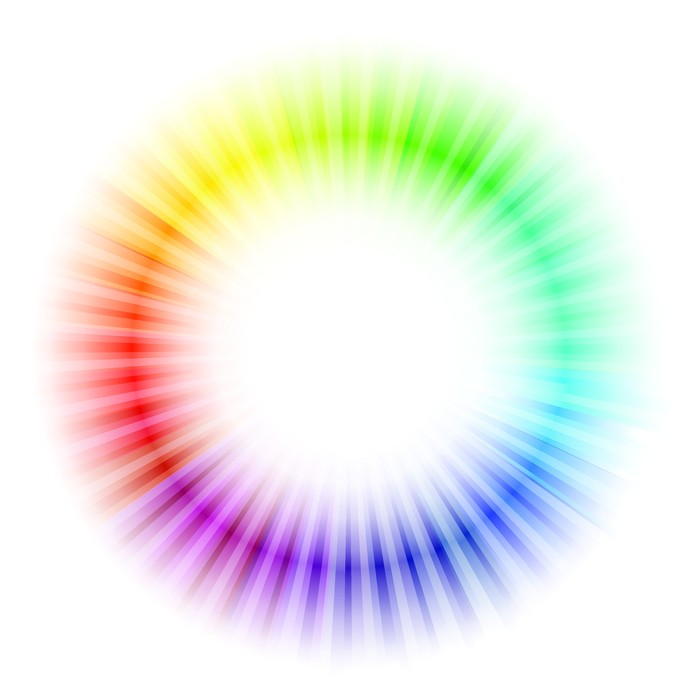Advertisement
Grab your lab coat. Let's get started
Welcome!
Welcome!
Create an account below to get 6 C&EN articles per month, receive newsletters and more - all free.
It seems this is your first time logging in online. Please enter the following information to continue.
As an ACS member you automatically get access to this site. All we need is few more details to create your reading experience.
Not you? Sign in with a different account.
Not you? Sign in with a different account.
ERROR 1
ERROR 1
ERROR 2
ERROR 2
ERROR 2
ERROR 2
ERROR 2
Password and Confirm password must match.
If you have an ACS member number, please enter it here so we can link this account to your membership. (optional)
ERROR 2
ACS values your privacy. By submitting your information, you are gaining access to C&EN and subscribing to our weekly newsletter. We use the information you provide to make your reading experience better, and we will never sell your data to third party members.
Analytical Chemistry
Celebrating The International Year Of Light
C&EN explores the past and future interplay of light and chemistry
by Jyllian Kemsley
October 13, 2015
| A version of this story appeared in
Volume 93, Issue 40

In 1666, Isaac Newton separated white light into a rainbow of colors using one prism, and then he added a second prism that recombined the hues. The experiment led him to a crucial conclusion: Light is a spectrum.
Since Newton’s time, the science of light has advanced well beyond what he envisioned. We now know that “light” can describe everything from a radio wave to a gamma ray and is made of oscillations of electric and magnetic fields. And those oscillations exhibit properties not just of waves, but of particles.
As our understanding and control of the electromagnetic spectrum have progressed, so too has our knowledge of how matter absorbs, reflects, and transmits light. That progress in turn has fueled use of light as a catalyst and probe to drive our understanding and control of chemical systems.
“The history of chemistry itself winds around photochemistry and spectroscopy, for it was at this interface that the nature of the chemical bond was discovered,” wrote Douglas C. Neckers, founder of the Center for Photochemical Sciences at Bowling Green State University, in his 1993 book “Selected Papers on Photochemistry.”
Beyond discovering the nature of the chemical bond, scientists have used light to understand chemical structures from small organic molecules to large protein complexes, reveal the dynamics of molecules undergoing reactions, and create new molecules through photochemistry.
In honor of the United Nations proclaiming 2015 as the International Year of Light & Light-Based Technologies, we’ve highlighted some of the key points in the history of light and chemistry. We also take a look ahead to see how chemists are advancing the use of light to make new discoveries.
Illuminating The Future
C&EN forecasts what’s next for light-based discoveries in five areas of chemistry
Higher Fields and Smaller Sizes for NMR
In 1946, Edward Purcell and Felix Bloch demonstrated that radio waves could be used in conjunction with a magnetic field to generate nuclear magnetic resonance and reveal structural details of molecules. A variety of NMR methods with an alphabet soup of acronyms are now staples for elucidating information about small organic molecules, catalyst surfaces, large proteins, and more.

Looking ahead, NMR experts anticipate expanded use of hyperpolarization techniques, which involve adding agents to boost the NMR signals of a sample. Such techniques will enable applications such as mapping cell metabolites and better investigation of surfaces, as well as “applications that we maybe haven’t even thought of yet,” says Lyndon Emsley, head of the Laboratory of Magnetic Resonance at the Swiss Federal Institute of Technology in Lausanne (EPFL).
Also on the horizon are both higher magnetic fields and smaller magnets, adds Robert G. Griffin, director of the Francis Bitter Magnet Laboratory at Massachusetts Institute of Technology. Research magnets are already expanding beyond 1 gigahertz. With advances in superconducting wire technology, those higher fields will come in a smaller package, possibly at lower cost.
And entirely new technology may allow scientists to miniaturize NMR instruments. Microcoils are shrinking magnets, and new detectors are now being made using a nitrogen atom and a lattice hole to replace two adjacent carbon atoms in diamond. This creates a site sensitive to magnetic fields emanating from molecular species outside the diamond detector. As the technology progresses, someday “maybe you’ll swallow something to do some kind of in situ metabolic analysis,” Emsley says.
Microwave Applications Expand
Microwave appliances followed an unusual development path that started in the consumer market—Percy Spencer first developed one to heat food in 1946—then migrated into scientific labs.

The first application of microwaves for chemistry started in the 1970s when scientists used them to dry solids. In the 1980s, microwave use expanded to include heating samples to aid their breakdown in acid for elemental analysis. Chemists subsequently started using microwaves as an energy source for synthetic reactions.
The future will likely bring new applications, says Michael J. Collins, president and chief executive officer of CEM, which manufactures microwave reactors. Scientists may use microwaves to provide energy to and speed up biological sample preparation, such as enzyme digestions in microtiter plates, as well as processing of other samples for chromatographic separations.
Collins also expects to see microwave technology increasingly being used for commercial synthesis of peptides and in flow chemistry, although there are limitations to how far microwave reactors can scale industrially.
The selective heating ability of microwaves might also yield some special effects in nanotechnology. “Nanoparticles can couple strongly with microwaves, so you can do a nanomaterial reaction in seconds that’s just not possible with conventional heating,” Collins says.
Photochemistry Gets Practical
Use of photochemistry goes back at least as far as the early 1800s, when Nicéphore Niépce produced the first photoengraved print by coating a surface with a light-sensitive bitumen, laying a print on top, exposing it to light, and then washing away the unhardened material.

Going forward, photochemistry is poised to make big inroads in the areas of capturing solar energy with chemical bonds and reducing carbon dioxide into chemical feedstocks, in addition to medical therapy and diagnostics.
But there’s a lot that remains unknown about photochemistry, particularly when inorganic compounds are involved. For example, researchers don’t understand why particular transitions between two electronic states occur much faster in some inorganic complexes compared with others. Research that improves our fundamental understanding will enable the field to push forward and develop better catalysts, therapeutics, and other materials, says Claudia Turro, a chemistry professor at Ohio State University.
Meanwhile, pharmaceutical companies are starting to embrace photochemical techniques, which can yield different products than thermally heated reactions. And new methods are being developed to use visible rather than harsh ultraviolet light, as well as to control stereochemistry. “Photochemical synthesis is being translated from a more or less academic exercise to something that can be used for a practical purpose,” says Tehshik P. Yoon, a chemistry professor at the University of Wisconsin, Madison.
Exploiting Spectroscopy’s Quantum Nature
Optical spectroscopy dates to 1859, when Robert Bunsen performed the first flame test by placing metal salts in his eponymous flame. Bunsen and his colleague Gustav Kirchhoff then started separating the light emitted by the compounds using a prism, identifying their emission spectra and developing a spectroscope to further their studies.

Since that time, chemists have endlessly improved on the spectroscope and developed a variety of techniques to exploit the power of light to probe ever deeper into molecules and chemical reactions.
At the forefront of optical spectroscopy today are multidimensional techniques that illuminate on the femtosecond time scale how reactions progress. The approaches are akin to those used for NMR but applied in the range of infrared to X-ray radiation.
Researchers are also working “to use the quantum nature of light in order to access novel information that is not possible with classical light,” to understand the details of phenomena such as light harvesting in photosynthesis, saysShaul Mukamel, a chemistry professor at the University of California, Irvine.
That involves using techniques such as photon entanglement, in which photons are connected quantum mechanically to each other. “You can detect electronic states that so far have been undetectable with classical approaches,” says Theodore Goodson III, a chemistry professor at the University of Michigan. Entangled photons also allow scientists to probe materials with significantly fewer photons, enabling better imaging while reducing sample damage, as well as new methods for sensing and lithography.
Brighter X-Rays Probe the Otherwise Inaccessible

In 1947, a technician at General Electric Research Laboratory used a mirror to peer around a concrete wall that shielded an electron synchrotron accelerator. He was checking for sparking, but what he saw instead was a bright arc of light—the accelerated electrons were emitting radiation, a phenomenon that had been predicted but never before observed.
In 1968, the first storage ring was built to hold electrons in a circular orbit that would produce a stable source of far-ultraviolet and X-ray radiation. In the years since, chemists have depended on such light sources for spectroscopic and crystallographic studies. Each new generation of synchrotron yields more intense light. “The promise there is to be able to do nanoscale imaging—true imaging of structure on the nanoscale in three dimensions with chemical resolution,” says Roger Falcone, director of Lawrence Berkeley National Laboratory’s Advanced Light Source. Such imaging will aid research in areas such as catalysts, microprocessors, and water filters.

And then there are the so-called free-electron lasers, which are also produced by accelerating electrons and yield even more brilliant light. Several exist worldwide to provide lower-energy “soft” X-rays that allow scientists to identify elements, while the Linac Coherent Light Source at SLAC National Accelerator Laboratory produces high-energy “hard” X-rays necessary for structural studies.
Key to using those hard X-rays is producing them in very short, extremely intense pulses. Such pulses allow for collection of diffraction data for a tiny crystal or even single molecules, in addition to step-by-step monitoring of reaction dynamics.
Tune in on Oct. 21 to learn about the fields of photonics and plasmonics in a webinar featuring Harald Giessen of the University of Stuttgart, Luis Liz-Marzán of Spain’s Centre for Cooperative Research in Biomaterials, and Jennifer Dionne of Stanford University. Register at http://cenm.ag/photonics.







Join the conversation
Contact the reporter
Submit a Letter to the Editor for publication
Engage with us on Twitter